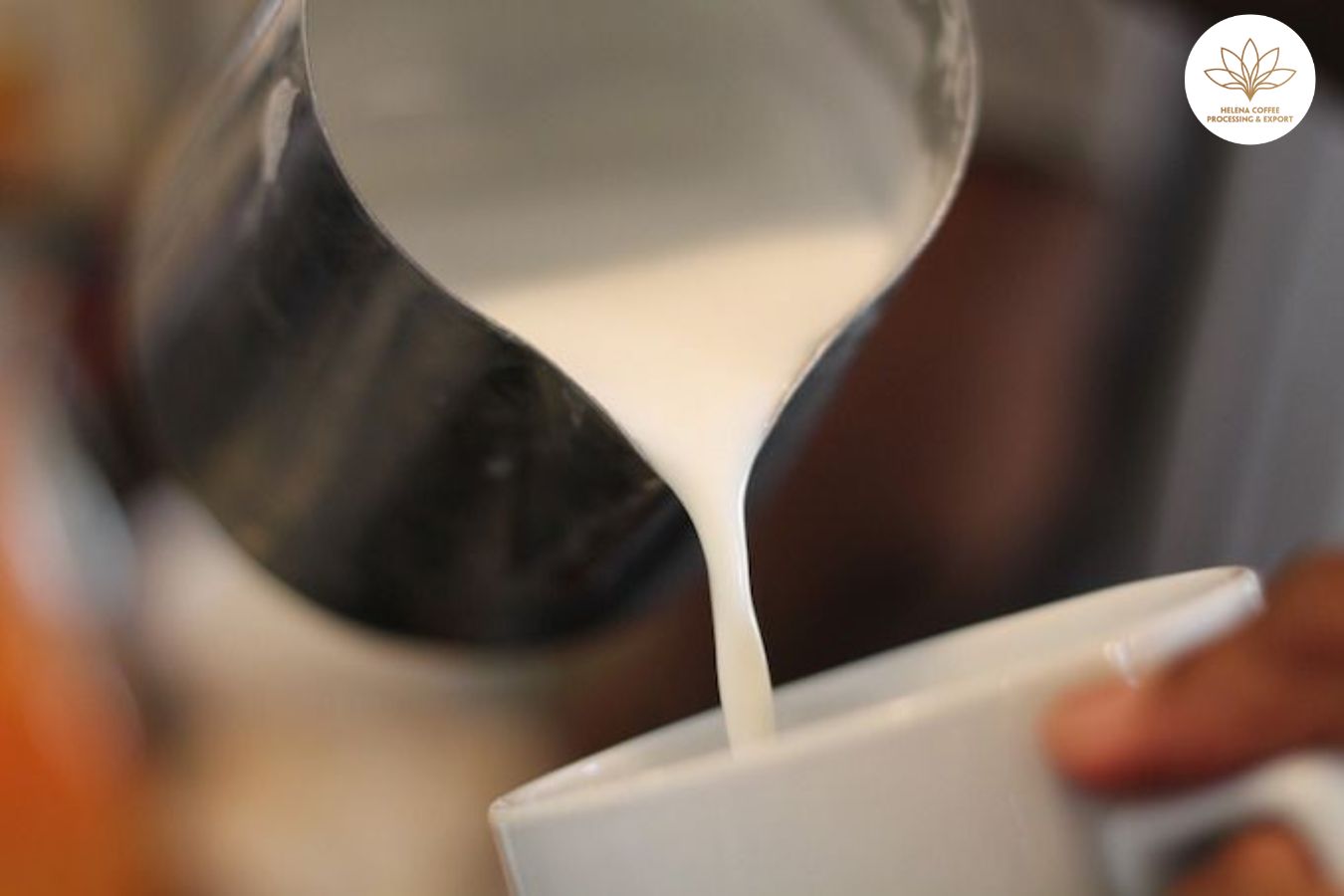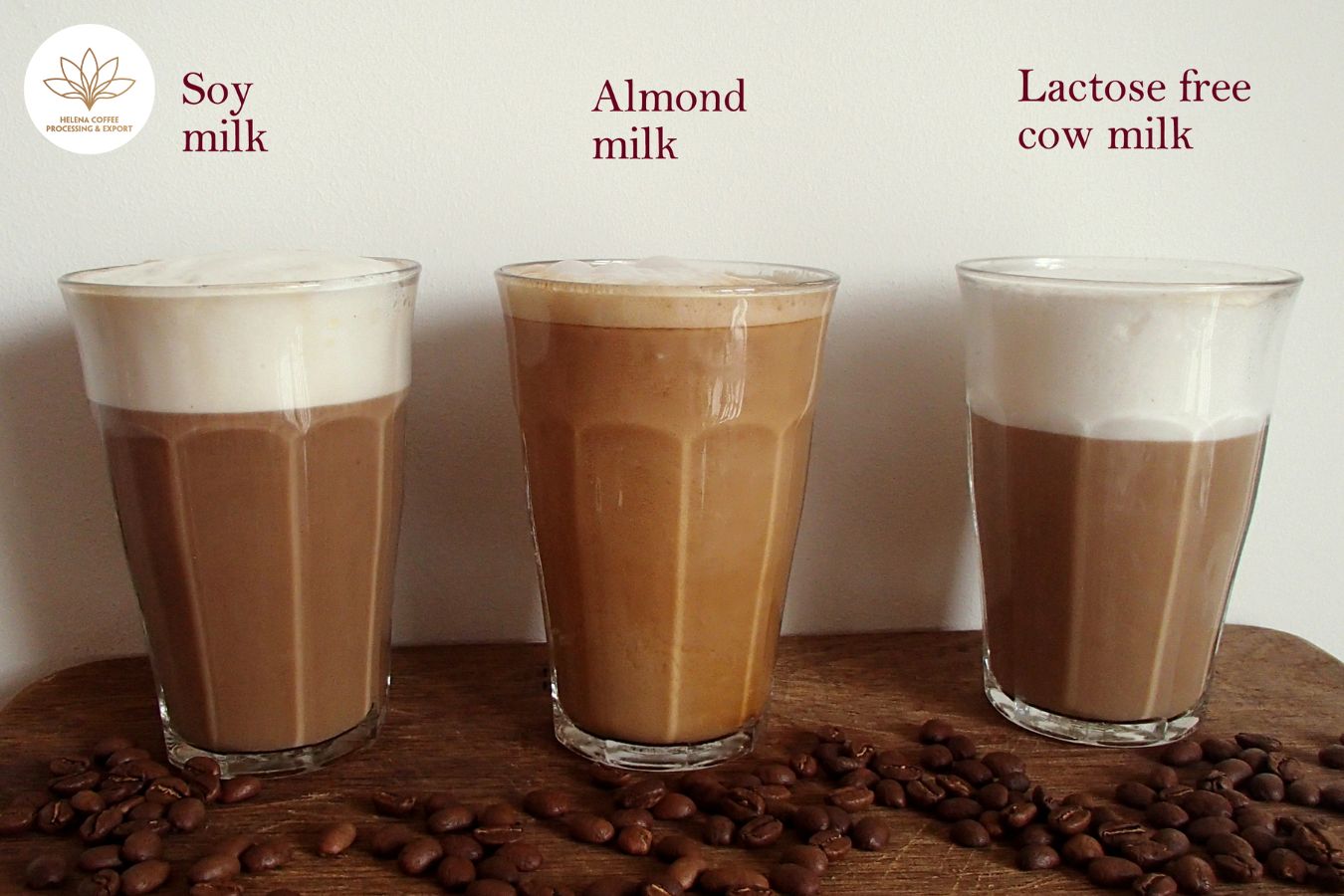
Enhancing Sweetness in Dairy Preparations by Removing Lactose: Animal milk is a widely favored addition to coffee, with over 70% of consumers preferring it to straight espresso or filtered coffee. Milk enriches coffee with a creamy texture and a smooth taste, along with providing some nutrients and calcium. Furthermore, it can mitigate the bitter notes of coffee due to its natural sugars, which lend a sweetening effect to the beverage.
Lactose, a component of animal milk, has a direct impact on the flavor of coffee drinks. For many years, there has been a debate about its role in coffee preparations and, more recently, about how its removal might enhance sweetness and create superior espresso-based beverages. To delve deeper into this subject, I spoke with Carlos Medina, head of the roasting area at Espacio Tuesta in Chile, and Carlos Guerra, owner of Café San Rafael in Honduras. Read on to discover their insights
Skim Milk vs Whole Milk: The Dynamics of Cream Formation
The cream in milk is created by the fats present within it. When milk is steamed, the steam bubbles attach to the fat particles and rise to the surface. This process causes the fat particles to clump together, forming larger bubbles that eventually become cream.
The amount of cream produced is dependent on the milk’s fat content and the steaming technique employed. High-fat milk, such as whole milk, typically yields more cream than low-fat options like skim milk.
The steaming process is also influenced by various factors, including the temperature of the milk, the speed of the steam wand, steam pressure, and the quality of the milk itself.
Carlos Medina sheds light on the science behind milk frothing: “Milk bubbles are created by air surrounded by fat, which adds stability and elasticity. When using skim milk, there’s less elasticity because the fat coating around the bubbles is thinner and less pliable. At the same time, the reduced fat content actually makes the bubbles slightly more stable and increases the presence of the protein that contributes to firmness.”
Furthermore, he notes that “especially for latte art, using skim milk can result in designs that last longer but are more challenging to create due to the lack of elasticity and creaminess. In terms of the beverage itself, whole milk generally produces a more consistent flavor, while skim milk can lead to stratification and a less creamy, even texture throughout the drink
What is Lactose and How Can It Be Removed?
Lactose is a sugar found in milk and dairy products. Some individuals are lactose intolerant, meaning their bodies don’t produce enough lactase enzymes to properly digest it.
This deficiency can lead to symptoms such as bloating, diarrhea, abdominal pain, and gas after consuming dairy products. Carlos Guerra remarks, “There are various degrees of intolerance, which is why we should always ask people what type of milk they prefer to prevent any discomfort.”
Lactose is a disaccharide made up of two simple sugars, glucose and galactose. It can be removed from milk through a process called enzymatic hydrolysis. This is done by adding the lactase enzyme to milk, which then breaks down lactose into simpler sugars that are easier to digest, such as glucose and galactose.
Once lactase is introduced, it begins to break down lactose into its simple components, thereby reducing its content in the milk. The reaction time and the amount of lactase used can vary depending on the producer.”
Lactose – Free Milk in Coffee Beverages
Lactose-free milk, having had the lactose removed, results in a beverage with an increased level of glucose. Consequently, the drink tastes sweeter, as glucose is a simple sugar more readily detected by our taste receptors.
This becomes particularly engaging when pairing milk with coffee, as it allows for the creation of beverages with distinct flavor profiles, especially when contrasted with those made with whole milk.
“Lactose is harder for the palate to detect,” Carlos Medina explains. “Glucose, on the other hand, is very noticeable and slightly alters the sweetness profile to a more synthetic taste, akin to that of sucralose or stevia – an intense sweetness that stands out in the beverage. Ultimately, it changes how the drink is perceived and shifts the flavor profile towards sweetness.”
The use of lactose-free milk is becoming increasingly popular among consumers, and its availability in supermarkets is on the rise. Baristas, too, have begun to utilize it to craft varied coffee beverage profiles, providing an extra hint of sweetness or to balance certain flavors.
Medina notes that “in competitions, there’s a lot of play with combining whole milk and lactose-free milk depending on how they want to tweak the flavor profile of the drinks. Several competitors from Chile, for instance, have used lactose-free milk to add sweetness and whole milk to contribute elasticity and consistency.
What Type of Coffee Best Complements Lactose-Free Milk, and in Which Preparations?
“In my experience, intensely robusta coffees with pronounced cocoa or chocolate notes, which are quite strong and tend toward bitter rather than fruity flavors, pair very well with skim and lactose-free milk,” states Carlos Medina.
On the other hand, he believes that “more acidic or fruity profiles create imbalance because the acidity and sweetness are competing at very high intensities.”
“Much of the lactose-free milk available in the market is also skim milk, which requires more effort to texture properly. It’s important to fine-tune the espresso, the foundation of our beverage, aiming to enhance the bitter notes.”
Carlos Guerra adds: “It’s easier to make cold drinks with lactose-free milk than hot ones. Milk’s sweetness is more pronounced when heated. For me, it’s much better to use it in cold beverages.
Removing Lactose Free Milk in Competitions
While coffee shops are the primary venues for coffee consumption, customers typically opt for more common types of milk, and there’s yet to be a selection of milk specifically designed for crafting specialty beverages.
“In the context of a coffee shop, no one is concerned with lactose-free milk because it’s sweeter; it’s chosen mainly for stomach or medical reasons,” asserts Carlos Guerra.
In competitions, however, is where the greatest innovation occurs with the use of different types of milk by baristas who aim to create a profile that will astonish the judges.
Carlos Guerra explains, “Nowadays, championships are so specialized that the milk beverage is no longer just one category. It’s not enough to just say milk is milk; you have to be more descriptive about the milk’s source and innovate each year.”
“If the rules don’t forbid it, you can do it. Beyond lactose-free milk, we’ve recently seen frozen milk, cryogenized, or reduced by evaporating the water. There’s tremendous innovation in what can be done with milk,” he maintains.
In summary, removing lactose from milk results in a sweeter beverage. Therefore, it can be utilized to modify the taste of espresso-based drinks, and baristas already do so to achieve diverse flavor profiles in their concoctions.
The decision to use this milk depends on the consumer’s preference, but it is advisable to adjust the espresso accordingly to achieve the best results.
FAQS: